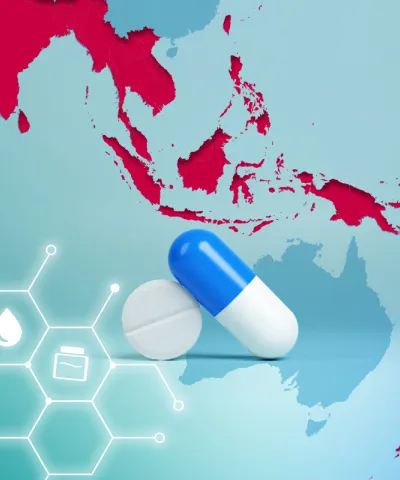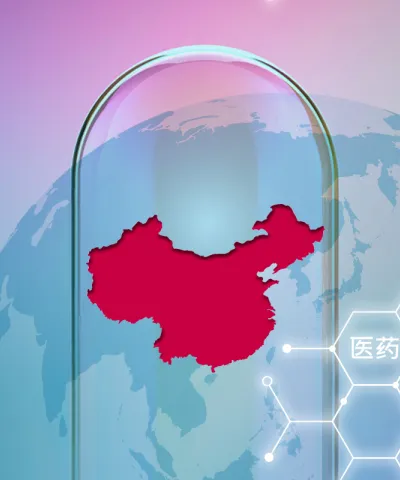The potential for digital interaction remains vast, as technologies dramatically and thoroughly transform how suppliers go to market. Nonetheless, the ability of chemicals companies to seize these opportunities still leaves too much of that potential untapped. Supported by insights from in-depth interviews with managers and executives, we reveal the weakest points in the seamless customer experience showing companies how to “future proof” their go-to-market strategies and improve their chances of helping customers succeed.
Digital technologies are completely redefining what it means for chemicals manufacturers to attract, serve, and retain customers. The great news for suppliers is that they now have unprecedented opportunities to access customers directly and interact with them. More than 90% of buyers now inform themselves using a mobile device and 93% prefer to order online instead of ordering from a sales rep. The upside is that 86% of buyers admit that they have a higher willingness to pay for excellent outsourced customer service. It’s hard to imagine stronger incentives for suppliers in the chemicals sectors to master the ability to provide a seamless customer experience, from awareness to interest, then purchase and service, and finally to loyalty.
Conversion: Where the seamless experience unravels
It is indeed great news that chemicals suppliers can now interact with their customers in more and better ways than ever before. It is also good news that 81% of manufacturers have basic e-commerce solutions in place.
“Customers expect more ease of doing business and simplified ordering processes, such as one-click ordering with docu-sign and track&trace for seamless interaction across communication channels,” one senior manager told us in our recent interviews.
The challenging news, however, is that customers now have more opportunities than ever before to interact with potential suppliers. More customer choice means more customer power, and customers are wielding that newfound power with increasing sophistication. An easy-to-use order platform is now a hygiene factor and no longer a true advantage.
The weakest point in the seamless relationship is conversion. Think of it this way. Customers go online for many reasons. They could be searching for information, trying to elicit a lower price and gain negotiating leverage, or genuinely seeking a partner to help them solve their problem. When does the point come when the customer decides that they will succeed together with you, or conversely, when does the customer decide that their success chances are higher with another supplier instead?
As one manager described it: “Just generating traffic on our website is not enough. We have to rethink our sales processes in order to actually close deals and generate revenue with digital leads.”
When customers have more power and more choices, it seems outdated to say that a salesperson, supplier, or channel partner “owns” a customer relationship. Today it is more appropriate to focus on enabling ongoing customer success rather than thinking in narrow terms of “loyalty.” Digital technologies place more focus on earned loyalty from customer satisfaction, which essentially reflects how well the supplier and its ecosystem help a customer succeed on a continual basis.
Why is conversion so challenging?
Much of the difficulty lies in the fact that digital customer interaction occurs across so many different dimensions. The traditional sales approach is to generate interest and then close the sale offline. But when most interactions take place online, the customer becomes less visible and more powerful at the same time. Without a better understanding of customers’ trigger points or “a-ha” moments, suppliers can’t direct resources to the most promising leads and close them.
This places a premium on clearer points of contact and better measures of success. Suppliers need the ability to communicate effectively with customers early in the process – at the awareness and interest stages – across multiple channels. At the same time, suppliers need predictive scoring models at an earlier stage, so they can segment the information seekers from the price and partner seekers and guide them to the right answers. They need to reliably and consistently recognize and qualify leads, convert them, and hold the relationship.
Future-proofing a go-to-market approach starts with mapping customer touchpoints by order of importance. Are you solving an issue that can help the customer succeed? What are the markers and indicators that tell you that? Can you solve distress faster and better than your competition? Successful suppliers then route these qualified leads seamlessly across channels, each with a customer-care concept by segment.
Using technology to enhance early-stage communication
Interaction at the first two stages – awareness and interest – is vital. Manufacturers need to invest in direct customer interactions at the start of the customer journey to increase the conversion rate. Customers’ well-established desire to search and purchase online has not eliminated the power of personal interaction. Instead, it has amplified its importance at the top of the funnel.
Suppliers have several ways to support customers early in their journeys, and at the same time understand what they are looking for and how best to serve them. These technologies include:
- Chatbots to address target groups: These automated but intelligent tools which can identify lookalike target groups, address customers via one-on-one communication on social media platforms, and generate and pass on qualified contacts.
- Matching platforms for manufacturers and customers: The purpose of providers like CheMondis or Knowde is to generate contacts between manufacturers and buyers. They reduce search costs and waiting times for interested customers, but at the same time, they help a supplier qualify contacts.
- Web crawlers to exploit leading indicators of customer movements: Not all information about customers will come directly from the customers themselves. The larger ones leave significant online footprints as well as clues about the state of their business. These tools crawl websites to look for information about new production sites, job advertisements, personnel change announcements, and the emergence of new CRM startups. Analyzing this information allows a supplier or its partners to identify customers that are undergoing changes and may therefore have different needs with different intensities and priorities.
The information from these tools can enable a supplier to use predictive scoring to find trigger points in the early stages of customer outreach. The supplier defines relevant triggers and data for each customer segment, then relies on the triggers to address the right contact at the right time.
One particular sales challenge in chemicals is how to shorten the time-to-market in sampling, testing, and customer development projects. How does a surface supplier replicate the touch-and-feel aspects of a formulation with less personal interaction? How can coatings producers improve customer access to scarce technical specialists? The recent COVID-19 pandemic helped to challenge conventional wisdom relying solely on personal interaction. One polymer producer established a new “call-in the technical expert” format for quick reaction times. Think Virtual Lab visits at a fingertip instead of jetlag. Meeting these challenges also shift the focus on relationships with distributors from “box-moving” to specialized personal support in places where the supplier cannot.
There is no prescriptive solution for future-proofing
To find their own answers to these go-to-market challenges, suppliers first need to step back and ask themselves four questions, two of which are customer-specific questions and two of which are internal. From the customer perspective:
- How effective is our current digital lead generation and business development approach?
- How consistently and sustainably are we meeting customer expectations for the quality of interactions?
Regarding internal challenges, a supplier needs to ask itself:
- What organizational structure and skillsets do we have to enable digital?
- How sophisticated are our underlying systems, tools, and datasets?
The answers to these questions will provide a status-quo assessment. The supplier gains an understanding of customer journeys and key touchpoints, trends in customer behavior, and where these trends may lead. The answers also enable a supplier to identify weaknesses in their current model, define use cases for digital technologies, and estimate the financial and strategic impact from enhanced value delivery, greater efficiency, and better conversion.
But even these assessments may only apply for a limited time. Digital technologies continue to evolve, and their increased successful adoption by suppliers will create fresh competitive advantages. At the same time, customer power continues to grow in line with their ability to access information, communicate with suppliers, and make better choices.
The only reliable way to quickly develop strategies and tactics that hit multiple moving targets is a “test-iterate-learn” approach, followed by investment in the scaling and support of solutions that have proven most effective.
Our benchmarks show how well these efforts pay off. Suppliers can cut their cycle time from lead to offer by a factor of six. They see sales increase of as much as 15%, and can improve their Net Promoter Score by 17 percentage points. Finally, they can cut the SG&A expenses by as much as 22% once they have scaled and standardized solutions.
This article was first published in ICIS Chemical Business 11-17 June 2021.








